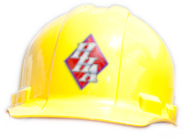It is easy to take the wonder of modern air conditioning for granted. After decades of readily available cooling systems, most Americans cannot even comprehend of a day when the A/C was not a part of their day to day lives. Through our homes, our offices, restaurants and theatres, our cars and our workshops flows artificially cooled air--a feat that would have seemed miraculous even 100 years ago.
It was 1835 when the first-ever patents for a refrigerating cooling system were awarded to American inventor Jacob Perkins. Later he would become known as “The Father of Refrigeration,” though even at that time Perkins was developing a reputation as a tinkerer, proving instrumental in the developing a machine that made nails, a bathometer, an engraving system of steel plates, and a steam engine just to name a few. Perkins received simultaneous patents in Scotland and England for his work on a system of vapor-compression refrigeration--which became and remains the most widely used form of refrigeration for air conditioning.
Another major breakthrough in the American A/C came from a Florida physician named John Gorrie in the late 1840s. Dr. Gorrie was wanting to develop a world shaped by comfort cooling--which eventually we did get. He initially worked out a method for cooling hospital rooms, but one that required massive amounts of ice to be transported from the North to be used. Undeterred, he then patented an ice-making machine that required wind, steam, or even literal horsepower to operate. Gorrie would never get to see his invention take off, dying penniless in the 1850s, but his dream would see fruition many decades later.
It was 1902 by the time Willis Carrier made the next significant advance in cooling technology. Carrier was an engineer for Buffalo Forge Company who had been tasked with dehumidifying the printing area at Sackett-Wilhelms Lithographing and Publishing Company in Brooklyn. The humidity was causing the magazines being printed to wrinkle and split. While working on the problem, Carrier developed a new method for cooling air, which he patented before forming his own company, Carrier Engineering Corporation.
The first public use of air conditioning actually happened two years later, at the World’s Fair in St. Louis. The event’s managers were able to cool the 1000 seat auditorium in the Missouri State Building. In early 1922, as movie theatres were becoming more and more popular across the country, Carrier Engineering installed a system in the Metropolitan Theater in Los Angeles. Later that same year, they introduced the public to their centrifugal cooling system at the Rivoli Theater in NYC.
Those breakthroughs eventually led to lower costs, and the A/C became a widespread phenomenon. Today, it is estimated that nearly 90% of all homes in the U.S.A. have an air-conditioning unit and that roughly half of all home energy consumption is due to regulating air temperature. Air conditioners have almost become as ubiquitous as the dreaded summer heat.


